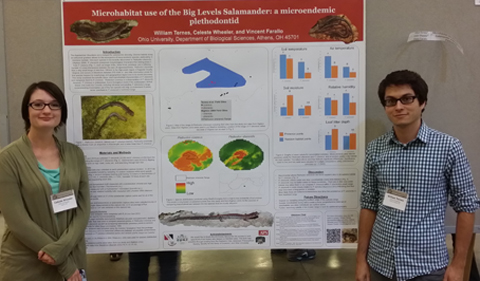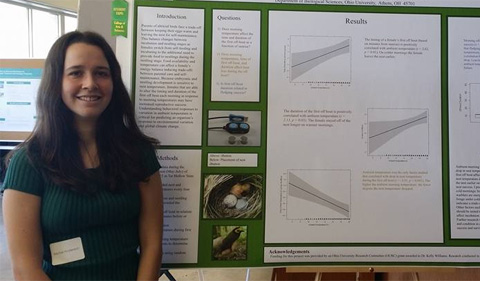Two Biological Sciences undergraduate students presented a paper at the 2014 Joint Meeting of Ichthyologists and Herpetologists July 30 to Aug. 4 in Chattanooga, TN.
William Ternes and Celeste Wheeler presented “Microhabitat Use of the Big Levels Salamander: A Microendemic Plethodontid,” co-authored with graduate student Vincent Farallo.
The Big Levels Salamander, Plethodon sherando, has a narrow geographic distribution of 100 km2 found primarily within Augusta County, Virginia. Generally, it occurs in rocky and forested habitats. The species is typically active on the surface during rainy nights and can also be found under rocks, logs, bark, mossy substrate, and other cover objects similar to many other plethodontid salamanders. Plethodon sherando is morphologically similar to Plethodon cinereus and both occur in striped and unstriped morphs. There is a narrow band of sympatry between the two species at lower elevations of P. sherando’s range, however P. sherando is the only small bodied Plethodon species throughout most of its small range. In order to better understand the ecology of P. sherando we studied microhabitat use which will be a first step in determining how this microendemic persists despite being surrounded by the wide ranging and closely related P. cinereus. We collected data starting in 2013 and will continue through 2014. We recorded soil moisture content, leaf litter depth, humidity, and air, soil, and ground temperature to characterize the microhabitat of P. sherando. We will be presenting our findings on P. sherando microhabitat use and also making comparisons to nearby P. cinereus.




















Comments